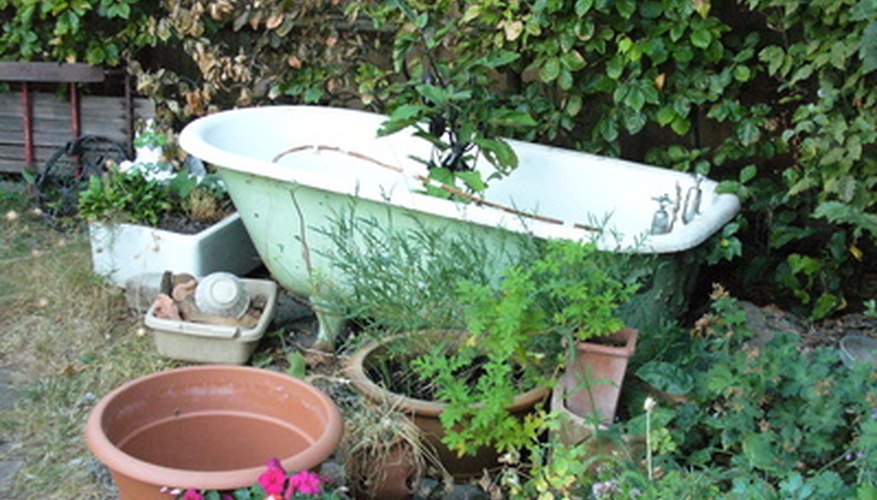Backyard ponds can be a joy year-round, but for many enthusiasts, in-ground ponds are simply not an option because of a lack of space or funding. Reusing an old bathtub can offer a whimsical solution, and container ponds are also much easier to relocate in the event of a move. While you may not be able to house a large number of fish in a bathtub pond, they are great for small goldfish, minnows and plants.
- Backyard ponds can be a joy year-round, but for many enthusiasts, in-ground ponds are simply not an option because of a lack of space or funding.
- While you may not be able to house a large number of fish in a bathtub pond, they are great for small goldfish, minnows and plants.
Level the bathtub with patio pavers or gravel underneath. Use a long craftsman's level to check the adjustment.
Plug the drain hole with a rubber drain plug, but do not seal into place. This will allow much easier draining for cleaning down the road.
Seal the bathtub overflow with aquarium silicone or another industrial-grade, waterproof sealant.
Hook up any filtration or fountainheads you would like to incorporate into the pond. While filtration is not always necessary in outdoor ponds, it can greatly improve water quality and circulation, especially in ponds with fish.
Fill the tub pond with water, and turn on the pond filters.
Raise portions of the tub pond to create hiding places for fish, using concrete blocks or patio pavers.
Plant water lilies, water lettuce, duckweed, wisteria, or other aquatic plants
Add livestock to the pond after two weeks. This allows the filter and pond water time to "ripen" and build up beneficial bacteria levels. Good fish for bathtub ponds include rosy red minnows, white cloud minnows, or mosquito fish. Never keep koi in a tub pond, as they require much more space than a typical bathtub will offer.
- Seal the bathtub overflow with aquarium silicone or another industrial-grade, waterproof sealant.
- Never keep koi in a tub pond, as they require much more space than a typical bathtub will offer.
TIP
The location you select for your bathtub pond should be out of full-time direct sunlight to avoid excessive temperature swings and algae growth, but preferably in an area that receives at least a few hours of full sun per day. Also consider nearby foliage, which may fall into the pond and rot. Even without water, bathtub shells are extremely heavy; aim to move the shell as little as possible to get it into its final place.
